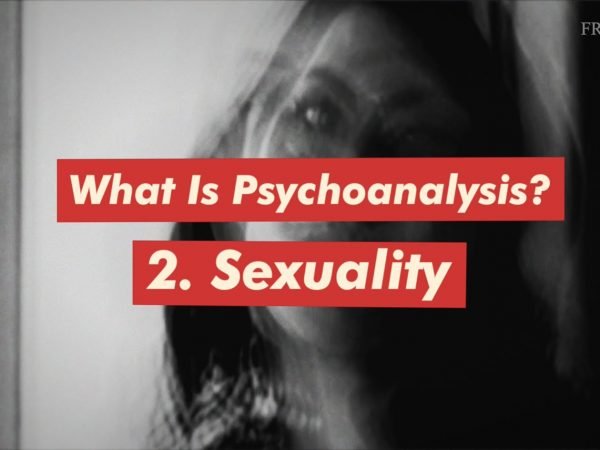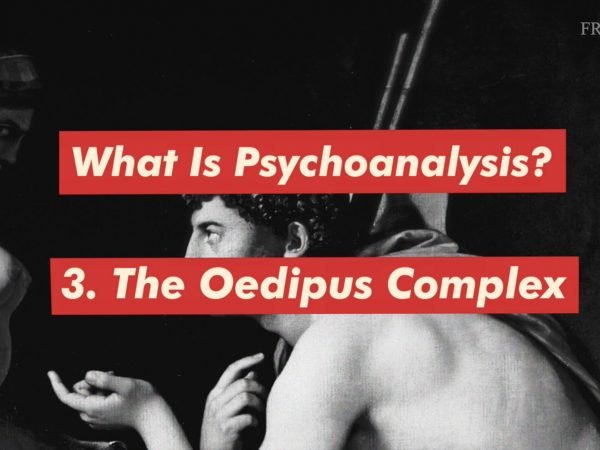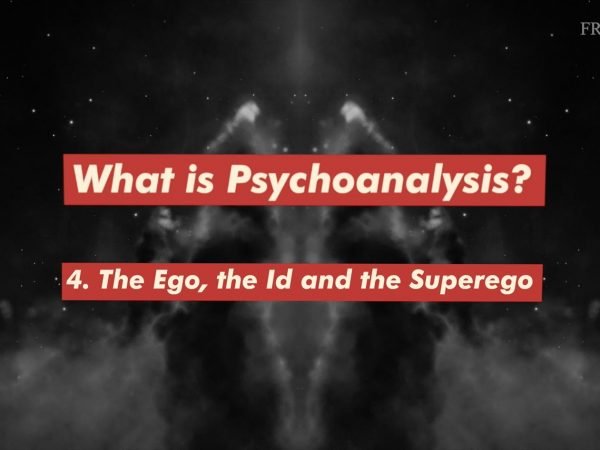These films are intended to facilitate first encounters with Sigmund Freud’s thought.
If you’re studying the psychodynamic approach, this resource is for you!
In this episode:
- Is psychoanalysis weird?
- A talking cure
- The unconscious
- The ego is not master in its own house
- Psychoanalysis and the ‘cognitive approach’
A factsheet (PDF) accompanies this series.
-
Transcript
-
Well it is weird! I think it’s extremely weird! Definitely weird. No question about that.
It’s weird because what it’s thinking about, what it’s addressing, is the nature of being human. It’s addressing the parts that we don’t normally reach.
It’s weird because it deals with stuff that goes on out of the daylight. It’s a night-time activity. It’s dreams. It’s sexuality. It’s mistakes we make. It’s the world of sexual fantasy. It’s the world of perhaps the dark thoughts, a spooky world. It’s about the hidden things the things particularly that you keep hidden from yourself.
One the things that all these psychoanalyses have in common is an idea of something called ‘the unconscious’. Sometimes we think about the unconscious as being some deep reservoir some place in your head where things are buried.
Freud once said that he had more archaeology books than psychology books. His view was that the mind was structured by layers like in archaeological digs and when he was excavating his patients’ minds it was just like an archaeologist digging down and discovering fragments from a long-lost time. Now the analyst doesn’t work with stones the fragments he works with are bits of memories, fantasies, infantile wishes, and he pieces those together with the analysand to construct the early history of the analysand that has become buried but that still is a foundation of his adult life and particularly of any symptoms he might have developed.
So someone might come with a symptom let’s say a problem in sleeping, a disturbance in their relation to eating, a sexual practice that they find disturbing, thoughts that overwhelm them that aren’t welcome. Through talking about these and through tracing their history the person might encounter elements from their own history perhaps from their family history and through talking about them, through articulating them, there’ll be a change to the symptom there’ll be change to that person’s life there’ll be a change to that person’s experience of suffering.
Patients ask me when they come in: ‘Well is that all we are doing? Just talking? How is this going to help me with my panic attack in the supermarket?’ Well, it helps because we assume that behind the panic attack are some unconscious motives and language can function like a lift where words can lift other words and other meanings from the level of the unconscious to consciousness.
So, take an example: A woman had told me that the previous day she had been cutting roses in her garden. ‘Red roses’, she said – she emphasized red roses. So I became alert to this, I asked her what she thought about red roses. She said: ‘Ah! I remember my father’s funeral, where his second wife threw a red rose into his grave as a token of love.’ And at that moment she felt a pang of pain, a pang of jealousy. So the word ‘rose’, an innocent word, had drawn up from the unconscious the word ‘funeral’ through a chain of associations and with the word ‘funeral’ a whole completely different story was connected than the original one about cutting roses. That’s how psychoanalysis works.
The Freudian human being is a human being who is not in control of him or herself. Freud famously said: ‘The ego is not master in his own house’. The house in which the ego lives is, you could say, it’s a haunted house. You try to be in control of your living space but you’re not. It’s the unconscious that controls us. Contemporary culture likes to see human beings as one dimensional: they’re governed by instrumental ends the search for happiness for wealth, for success as if human desire can be reduced to simple objects. Psychoanalysis, on the contrary, sees desires as emerging in the gaps in speech, in the cracks in what you’re saying, in your mistakes, in your slips of the tongue, in the failures that you repeat again and again in life.
If something’s been forced into the unconscious and it tries to come back as whatever it can express itself as or however it can manifest itself then something like a slip of the tongue would be that. If the unconscious bursts out in other ways that are more difficult like you always you know, you feel violent towards any woman that you begin to get attached to or something then maybe that’s going to cause a lot more problems in your life.
Many psychiatric and cognitive approaches today to human suffering see people’s symptoms as mistakes, as errors, as deviations as maladjustments with the aim of medical intervention or therapy being to correct them, to bring the person back to the norm, to get rid of their symptoms. The cognitive approach is that you identify as it were ‘pathological elements’ in the mind and then you have a programme of correction of those pathological elements through additional mental work. Psychoanalysis has a very different approach: symptoms aren’t there to be got rid of, they’re there to be listened to, to be heard with idea that a symptom isn’t a mistake, a learning error, but rather a clue to that person’s individual truth.
More episodes

What is Psychoanalysis? – Sexuality
Freud's account of sexuality was very different to mainstream ideas about it.

What is Psychoanalysis? – The Oedipus Complex
The emotional world of little children is not a peaceful world!

What is Psychoanalysis? – The Ego, the Id and the Superego
Freud discovered a mind at war with itself.